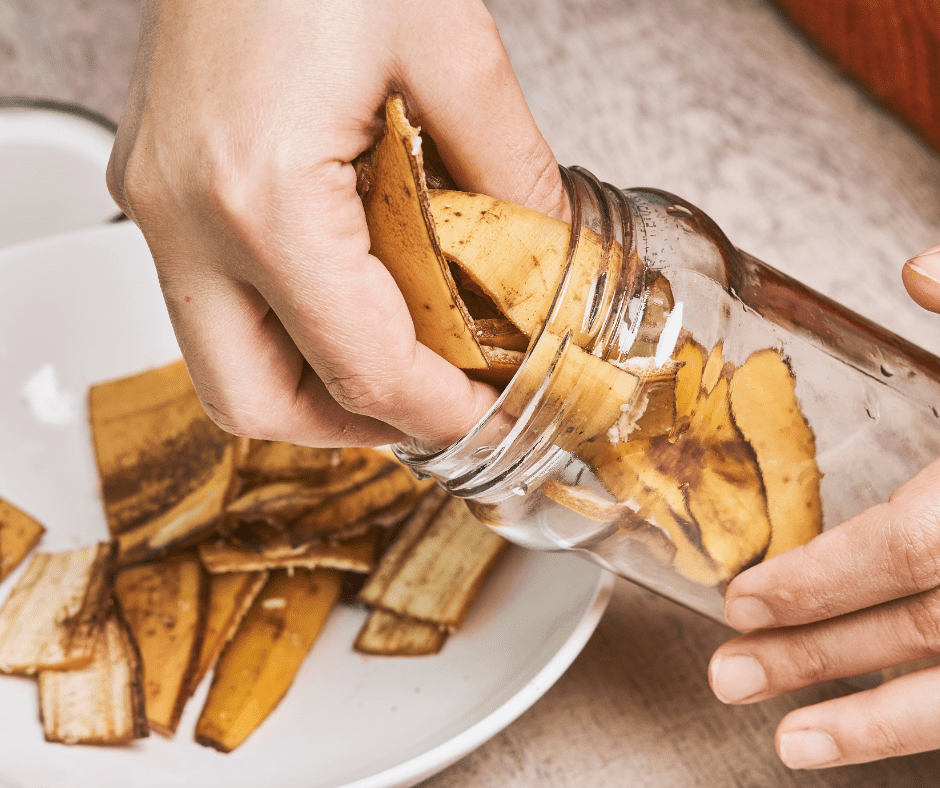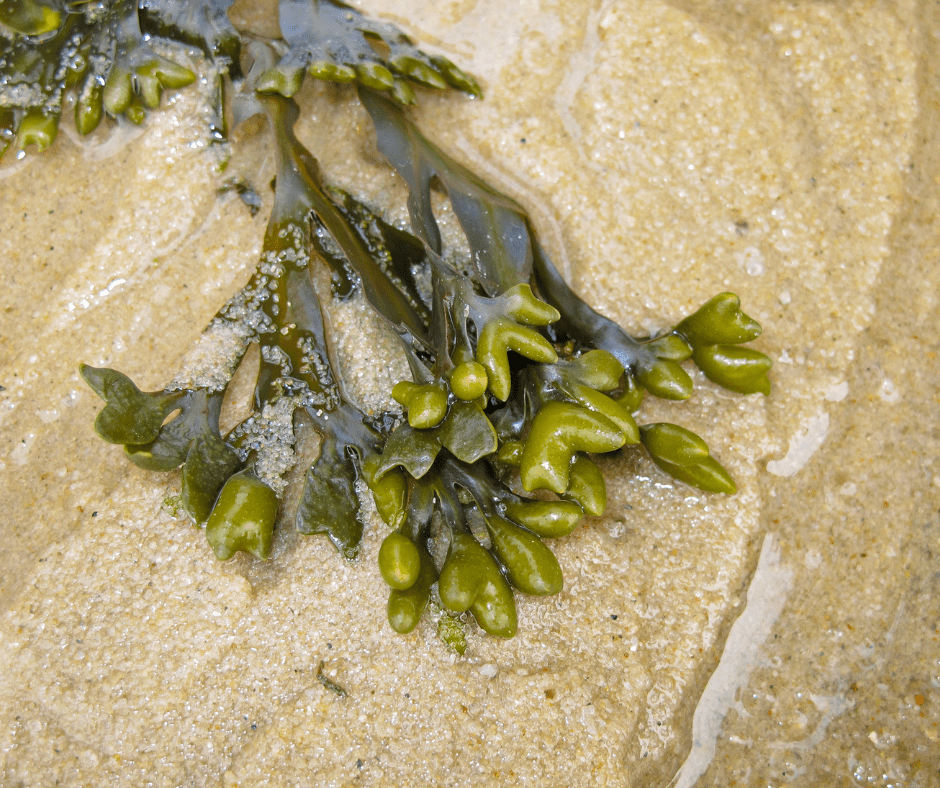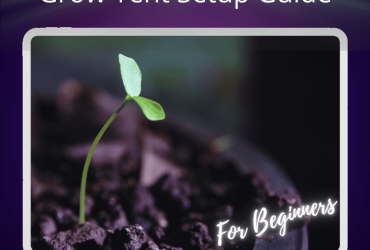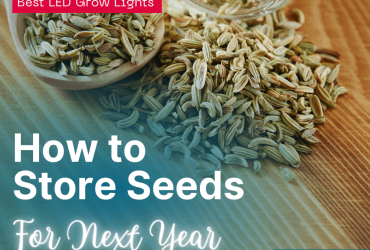Homemade Plant Food for Indoor Plants
Homemade plant food for indoor plants is my go-to method to keep my indoor garden nourished and thriving. Along with doing an excellent job, homemade fertilizer is highly cost-effective. In many cases, you can use food scraps and similar items to create it, so going with DIY plant food reduces waste, too.
Whether you have a flower garden, potted plants, or an indoor vegetable garden, you can give them the right nutrients by creating your own plant foods using a DIY recipe. If you’re wondering, “What is the best food to feed plants?” here’s what you need to know about homemade plant food for indoor plants.
What Can Be Used as Plant Food?
While you always have the option of using store-bought plant fertilizer, you might want something different for your flowering plants, indoor garden vegetables, or other growing needs. That’s particularly true if you’re focused on organic gardening. While commercial organic fertilizers do exist, they’re often spendy.
Regardless of whether you’re an organic gardener, homemade plant food is often more budget-friendly. Plus, it’s easy to make, and you likely have many ingredients in your home (and you might even be throwing some amazing fertilizers away.)
So, what can be used as plant food? A wide variety of things. Here’s a list of some of the more popular ingredients for DIY plant food that many people end up with regularly:
- Banana peels (or overripe bananas)
- Coffee grounds
- Eggshells
- Fish waste
- Grass clippings
- Seaweed
- Tea bags
- Tree leaves
- Vegetable scraps
- Weeds
Certain consumer products are also popular additions to homemade plant food for indoor plants. Bone meal – either store-bought or homemade – is widely used. Baking soda and Epsom salts are also common additions to homemade plant fertilizer.
Some recipes also call for chemicals like ammonia, which is a naturally occurring substance that’s manufactured to produce larger quantities for purposes like fertilizers and cleaners.
What Is the Best Homemade Plant Food Recipe?
Technically, there isn’t a single approach that’s considered the best homemade plant food universally. The reason is that different plants require unique quantities of specific nutrients. As a result, what works best for some plants isn’t always the ideal choice for others.
However, when you’re making homemade plant fertilizer, the goal is typically to reduce the use of unnecessary chemicals. As a result, sticking with natural ingredients – including organic options, if available – is generally preferred. I find that’s particularly true for indoor vegetable gardens, as it ensures I’m not incidentally ingesting something I’d rather avoid.
Beyond that, it’s mainly trial and error coupled with some research. Learning about the nutrients your indoor plants need to thrive is a great starting point. That way, you can focus on ensuring proper nutrition. After you gather that information, you can create and test DIY plant food recipes to find one that generates the positive results your plants love.
What Is the Best Liquid Fertilizer for Indoor Plants?
As with any type of homemade plant food, there isn’t a single best liquid fertilizer for indoor plants that you can create on your own. As mentioned previously, plants can have unique needs. Additionally, soil quality varies, which could mean adding or avoiding specific nutrients to achieve optimal growth.
In most cases, homemade liquid fertilizer DIYers like myself focus on using natural ingredients, favoring organic ones whenever possible. Outside of that, as discussed previously, finding the best liquid fertilizer for your indoor plants involves research and some trial and error.
How Do You Make Homemade Plant Food for Indoor Plants?
Making homemade plant food isn’t challenging, but the method you’ll need to use does depend on the type of homemade plant fertilizer you’re creating. To help you get started, here are some simple recipes.
Homemade Plant Food Recipes
Baking Soda, Epsom Salt, and Ammonia Liquid Fertilizer
This is a great starting recipe because it contains many nutrients plants need and uses common household products. Baking soda helps protect plants against disease, and ammonia has critical nitrogen. Epsom salt introduces sulfur and magnesium, which are also essential in the majority of cases.
Start with a one-gallon jug or bottle. Add 1 ½ teaspoons of baking soda, 1 ½ tablespoons of unscented, additive-free Epsom salts, and 1/3 teaspoon of unscented pure ammonia. Fill the container with water, and stir or shake to mix.
Allow the solution to sit for at least 15 minutes, stirring or shaking to confirm the ingredients are completely dissolved. Then, use it to fertilize your plants.
Easy Compost Tea Plant Fertilizer
Another simple option that works well for many people is a simple compost tea plant fertilizer. All you need to do is fill a jar about 1/3 to ½ full with water. Next, gather various kitchen scraps. Egg shells, coffee grounds, tea bags, and vegetable trimmings are all solid options, and you can mix different scraps together.
Crush the food scraps up a bit before you place them in the jar. As the jar fills, add water to keep the ingredients covered. Once the jar is nearly full, top it off with more water, put on the lid, and shake it daily for about a week. Just make sure the cover is a little loose when the jar is sitting, and keep it out of direct sunlight.
Once it’s done, you can simply add the liquid to your indoor garden. However, you can also dilute it if you prefer.
Simple Banana Peel Plant Food
Banana peels are rich in calcium, magnesium, phosphorus, and potassium, making them excellent ingredients for plant fertilizers. Plus, you can use them without having to do much work.
If you have large potted plants with ample soil space, you can chop up the peels to make them more manageable and bury them an inch or two beneath the top of the soil. Alternatively, you can put them in a food processor and turn them into a slurry, allowing you to inject or bury it in the soil.
If you’d rather have a liquid fertilizer, take a large jar and put the peels inside. Fill the jar with water, and let them soak. The longer they soak, the more acidic the resulting plant food is, so you can wait a week if you’d prefer less acid or soak longer for plants that prefer more acidic soil.
After it’s done soaking, strain out the banana peels and dilute the mixture based on your acidity preferences. Often, it’s best to dilute it with water, creating a 50-50 blend as a starting point. Then, you can adjust the blend based on how your plant responds.
Coffee Grounds and Eggshell Plant Food
You can make a quick instant plant food if you have coffee and eggs for breakfast. Put the coffee grounds and egg shells in a food processor or coffee grinder. Grind everything until you get a fine powder. Then, sprinkle over the soil.
Yard Trimmings Tea
Grass, weeds, and leaves are all excellent options for creating weed tea to use as plant food. Plus, you can mix in wood ash, Epsom salt, and a dash of ammonia to boost its nutritional value.
In many cases, you’ll want to fill a large bucket with various yard trimmings, cover it in water, and let it steep for three days before straining and using the water as liquid fertilizer. If you want to add the other ingredients, put those in first and stir. Then, add the yard trimmings.
For ammonia and Epsom salt, use the amounts in the first recipe on this list. With wood ash, a tablespoon is typically a good starting point.
Seaweed Liquid Plant Fertilizer
You can make seaweed liquid plant fertilizer using any kind of seaweed, including saltwater and freshwater versions or store-bought alternatives. The process you’ll use is essentially like making tea, though it takes a while to steep.
There isn’t an exact quantity you need, but many recommend using a five-gallon bucket. Fill the bucket about ½ to 2/3 full with rinsed and cleaned chopped-up seaweed. Add two to three gallons of water (depending on what will fit), ensuring the seaweed is submerged. Put the lid on, and let it steep for three to four weeks.
After steeping, strain out any remaining seaweed, keeping the liquid. Then, use a 50-50 mix of seaweed tea and water on your plants.
Fish Emulsion Plant Food
You can create a fish emulsion plant food if you regularly have fish scraps. You essentially use fish parts or guts you’d otherwise discard.
Using a ratio of one-part fish to two-parts water, add the fish and water to a bucket with plenty of spare room at the top. Let the bucket sit closed for one day, add more water, loosely cover it with a lid, and let it ferment for about three weeks. After that, you can add the mixture to your plants.
Just be aware that this plant fertilizer is smelly, both when it’s stored and during and after use. As a result, you may only want to try this if you have a good place to store the bucket and don’t mind the aroma lingering for a little while.
Aquarium Water Fish Waste Liquid Fertilizer
If you have a fish tank at home, you can make a plant fertilizer from the water in the fish tank. When it’s time to clean the tank, take some of the dirty water and set it aside. The fish waste and food particles in it contain certain nutrients that can benefit your soil, particularly nitrogen, ammonia, potassium, and phosphorus.
In most cases, you’ll want to dilute it with regular water when you first start, allowing you to see how your plants react. Additionally, only go this route if you have a freshwater tank, as the salt in saltwater aquarium water could harm plants. Similarly, if you use chemicals to change the pH or to address a disease, refrain from using this fertilizer on fruit or vegetable gardens.
White Vinegar Liquid Plant Food
An option for plants that prefer more acidic soil, white vinegar liquid plant food is incredibly simple to make. Take a traditional spray bottle, fill it with water, and add 1 ½ teaspoons of white vinegar. Put the sprayer back on and shake it to combine.
Generally, you only want to use this about every three months to avoid making the soil too acidic. However, you may want to scale that back if you use other plant foods with higher acidity levels.
Homemade Bone Meal Fertilizer
Bone meal is excellent for plant health, and you can make it yourself. One easy way is with chicken bones.
After serving a rotisserie chicken for dinner, this is one of my favorite ways to make my own plant food. Take the bones, remove all of the meat and skin, and clean away the seasoning. Put them in a large pot, cover them in water, and let them boil for two days. Overnight, turn the stove off and just let the bones soak before restarting it in the morning.
Along the way, you usually need to top off the water to ensure it doesn’t boil dry. Once the bones get soft, let the water cool, drain the water, and put the bones in a strong food processor. Blend until you get a fine powder. Then, you can sprinkle the powder on the soil, mix it into fertilizer teas, or use other approaches to fertilize your plants.
Enjoyed this post? Pin it!









